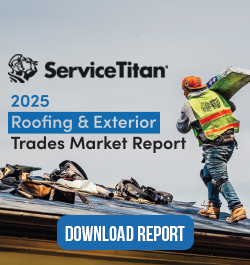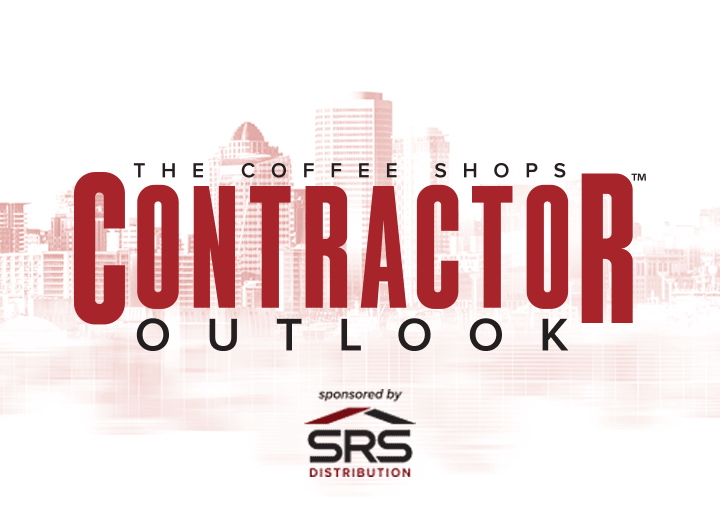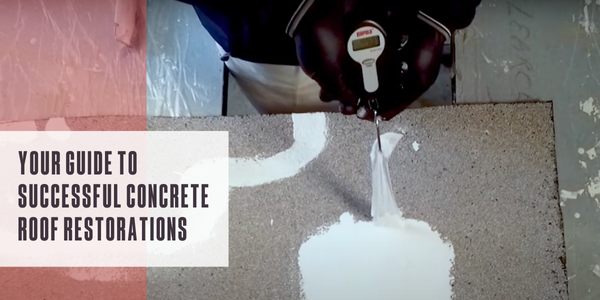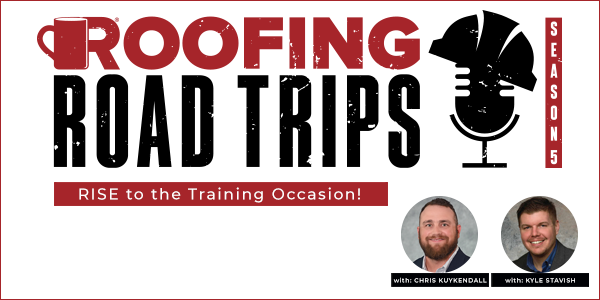Your guide to successful concrete roof restorations
August 20, 2025 at 6:00 a.m.By Emma Peterson.
Learn how to handle the unique challenges that crop up when restoring concrete roofs.
About a month ago, we had the chance to sit down with James “Jamie” Atkins, assistant product manager for UNIFLEX and Kool Seal, to talk about metal roof restorations. Recently, we got to chat with him again, this time about concrete roofs and the unique challenges that contractors need to be aware of when restoring them.
The biggest point that Jamie made was about the discrepancy of concrete as a material to work with. He explained, “I would say that concrete is the most inconsistent substrate used on a modern roof. EPDM is EPDM, there's not going to be much of a difference between a roll from one place and a roll from another. But when you talk about concrete, it's so affected by who applied it and how they applied it.”
Take water intrusion for example. This is something that occurs in a lot of concretes as they ages due to exposure to moisture, temperature changes and chemicals that can lead to both aesthetic and structural issues. But the true level of damage due to moisture and what that means for the person restoring a concrete roof can vary depending on what the original installer did and how long ago they worked on it. This is because different concrete construction methods utilize additives and coatings that can change the resulting concrete’s durability in the face of moisture intrusion.
However, contractors often do not have detailed information about the installation process neatly handed to them at the beginning of the project. That’s why it’s crucial to get up there and evaluate the roof before work starts, to make sure it is a good candidate for restoration.
Making that evaluation starts with an inspection. Jamie elaborated, “You’re going to do a review of the roof first and foremost. And when you’re doing that, there are a couple things that you need to focus on, mostly moisture and adhesion. You want to make sure you are using tools to check the moisture in the concrete and performing adhesion tests.” Performing these tests and reviews will be key to making an educated and informed choice about what primers and topcoats will be needed for a successful project.
In general, Jamie advises that contractors look for a primer specific to concrete. He explained, “Concrete's a very unique substrate in that sense. It's not like any other substrate that is on a roof and because of that you need a primer specific to concrete.” These primers can be made out of a variety of materials and each have unique strengths:
- Silicone: Tends to be really good for water and UV resistance and has elasticity that is helpful for the natural expansion and contraction of concrete.
- Urethane: While less elastic, this is much more durable and can support more foot traffic on the roof.
- Acrylic: Comes in more color options, but not as durable or resistant as silicone or urethane.
At the end of the day, it is important to approach every concrete restoration project as new and unique, given the inconsistency of concrete and the specific needs for the building.
Want more resources on different types of roof restorations? Visit the Sherwin-Williams Roofing Solutions' directory to learn more!
Learn more about Uniflex® in their Coffee Shop Directory or visit www.uniflexroof.com.

About Emma
Emma Peterson is a writer at The Coffee Shops and AskARoofer™. Raised in the dreary and fantastical Pacific Northwest, she graduated in 2024 from Pacific University in Oregon with a degree in creative writing and minors in graphic design and Chinese language. Between overthinking everything a little bit, including this bio, she enjoys watching movies with friends, attending concerts and trying to cook new recipes.























Comments
Leave a Reply
Have an account? Login to leave a comment!
Sign In